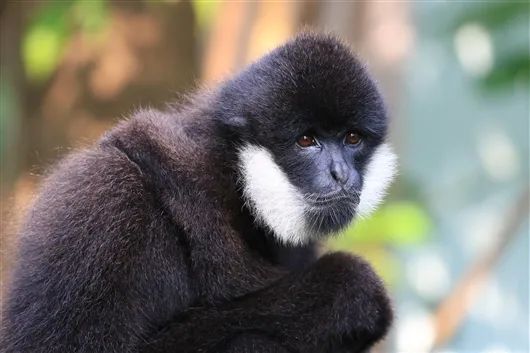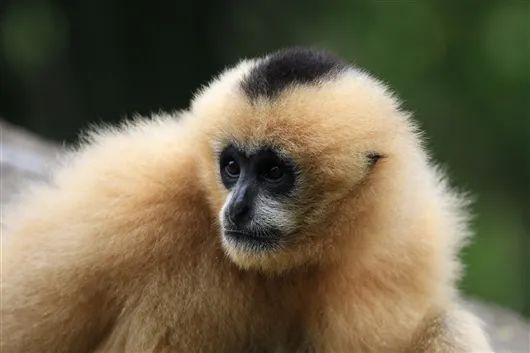Officially announced: Wild Extinction!
Author:Hubei Daily Time:2022.09.07

On September 6, at the 40th anniversary of the establishment of the National Endangered Species and 2021 Working Conference, the Evaluation Report 2022 of the Endangered Status of Chinese Spirits. The report shows that in the past few decades, the white palm gibbon and north white cheeks gibbon distributed in China have not been monitored in the wild, which meets the standards of extinction in the wild.
Wild extinction is a kind of protection status. When a species or its subspecies, the known individuals only survive in the environment of the circle, or their population must be released after the wild placement can return to its historical place, and they will return. Classified to protect the status quo so far.
Li Baoguo, the leader of the expert group and the professor of Northwest University, introduced, introduced,
Scientific researchers conducted a systematic survey of the well -known distribution area and surrounding areas. No survival population was found in the wild, and no one was listening to the screams of the time. Essence

Photo by Zhao Chao, a white palm gibbon
Scientific researchers have also conducted systematic investigations on the known distribution area and surrounding areas of the north white cheeks. Its sound.

Photo by Ma Xiaofeng, a male individual of the north white cheek gibbon

Photo by Ma Xiaofeng, a female individual Ma Xiaofeng, a northern white cheeks,
In the past three generations (within 45 years), the white palm gibbon has decreased by more than 50%due to the rapid loss of the forest, hunting, and pet trade of the habitat. The white-handed gibbon inhabits evergreen broad-leaved forests, semi-constant green broad-leaved forests, wet green broad-leaved forests, and evergreen-deciduous mixed forests below 1,200 meters above sea level. It is also found in the second forest and selective logging forest. The white palm gibbon distributed in Yunnan, my country, is significantly higher than other parts of Southeast Asia, with an altitude from 1900 to 2000 meters. The habitat of the white palm gibbon was greatly damaged in history. In the 1950s and 1960s, it was damaged due to the destruction of the forest wasteland. The forest was basically replaced by corn land. After abandoning farming, it gradually recovered.
The north white cheek gibbon is distributed in southwestern Yunnan, northern Laos and northwestern Vietnam. It has been distributed in some areas of Mengla, Jiangcheng, and Lvchun, south of Yunnan, east of Lancang River. You can even hear the gibbon singing in Mengla County, but there is no such situation in the 1970s. In 2011, scientific researchers investigated the three suspected gibbon distribution points of Mengla, and believed that Beibai's long -cheeks gibbon had extinct or at least ecological extinction in China. In order to more comprehensively grasp the current status of Bei Baiqi Nister in the Xishuangbanna area, the Kunming Institute of Animal Research of the Kunming Institute of Chinese Academy of Sciences cooperates with the Xishuangbanna National Nature Reserve. As a visit to the survey, the village was detected for 3 consecutive days at each listening point. None of them could not hear the sound of the north white cheeks gibbon, nor did it get effective information distributed by the north white cheeks.
Li Baoguo said that the world's primates are facing a serious crisis of extinction. More than 60%of animals are listed as dangerous, endangered or extremely endangered species, and the number of 75%of species has decreased. 80%of the 28 existing species in China are threatened, and the population of 15-18 species is less than 3,000. At present, almost all primates in China are inhabited in scattered landscapes. The "islands" state, the opportunities for communication between populations or genetic exchanges are severely restricted.
"Human activity is the root cause of the loss of biodiversity at a unprecedented speed, which also makes the long -lasting animals face a severe crisis of survival." Li Baoguo introduced that the direct causes of this series of extinction crisis mainly include the loss of habitats, absences, foreignizations, foreign countries The invasion of species, excessive development of resources, environmental pollution, global climate change, etc. But these are not the root cause of the problem. The root cause lies in the increase in population and the rapid consumption of natural resources, and the expansion of agricultural, biological resources excessively use and protected. Unreasonable systems.
Li Baoguo suggested to carry out special surveys of long -categorian animals to provide scientific and technological support for effective protection and management; strengthen the protection and restoration of habitats to ensure that wildlife migration of life border channels and habitat integrity; strengthen cross -border protection and promote regional cooperation, crack down on crackdown Illegitimate trade in the border, establish a scientific investigation research data sharing platform; strengthen the research on the basic biology of spiritual long -term long -class, and conduct in -depth research The scientific and evaluation of ecological tourism, establish a scientific ecological tourism evaluation system; strengthen the protection and education of wildlife protection, and form a new pattern of joint protection of wildlife in the whole society.
The report was completed by the Spiritual Society of the Chinese Society of Animal Society and the leader of a long -category research scholar organized by Northwestern University.
It can no longer wait for the restoration of the ecological environment!
Polar News commentator Wu Shuangjian
The news came, and netizens expressed their regret and distress. This is two kinds of animals that have been declared extinct in China after Bai Yan and Dugong.
After Bai Yan was declared extinct, many netizens lamented "hearing that it is forever", which is indeed the case.
But scientifically, the two gibbons are extinct in China, and the significance of the two is really different. Extinction, wild extinction, functional extinction, and an extinction of a certain area have specific meanings. Do not be confused.
Bai Yan is a unique species in China. It mainly survives in the Yangtze River Basin and declares extinction, which means that this species has disappeared from the earth. However, Dugong, white palm gibbon, north white cheek gibbon, etc., are just the extinction of China.
As the experts say, the wild extinction is a kind of protection status. When a species or its sub -species, the known individuals only survive in the environment of the circle, or their population needs to return to its historical existence after being released by the wild. When the location is classified, it will be classified to protect the status quo.
In addition to the history of white palm gibbon and north white cheeks, in addition to distributed in China, there are also wild populations in some countries in Southeast Asia.
If ... it is just if the original habitat of China recovers, it can restore the wild state through the way of breeding groups, and can also allow them to migrate naturally to establish wild population in China through natural migration.
For example, Dugong is not only a unique species in China.
Some experts said that if the seaweed in Hepu, Guangxi is restored, it will not be ruled out that there will be a migration from the waters of other countries.
Scientific data shows that the migration distance of dugvy can exceed 600 kilometers. In addition, China has also established relevant research groups to promote the re -introduction of the precious marine species of Dugong.
Of course, the most successful in this area is the elk.
The elk was native to the swamp in the middle and lower reaches of the Yangtze River, and then spread naturally, and once lived in most of China. In the end of the Qing Dynasty, the elk was extinct in China, and only a small amount of overseas. In 1985, China and Britain signed an agreement. 22 Elk returned to his hometown from Britain.
A report states that as of 2021, the number of national first -class protection of animal elk in China is tens of thousands. Now they have a lot of Stone Chief Elk National Nature Reserve, which are living in Hubei. There are reports from news that they survive well.
Of course, these are only theoretical. Although there are successful cases, they cannot be blind and optimistic.
The introduction and recovery of white palm gibbon and north white cheeks gibbon, and in -depth scientific research and practice must be carried out later. But the most urgent is the ecosystem of their survival. If there is no environmental recovery of the habitat, there is a place where they have a place, no more theory is theory without any practical significance.
The news of animal extinction has been repeatedly searched, reflecting the public's popularity of protecting wild animals, and protecting wildlife is also becoming a social consensus. But this consensus needs to be transformed into practical actions.
According to experts, the root cause of the two gibbons in the country is still due to the increase in population and the rapid consumption of natural resources, which leads to the environmental fragmentation and islands of their survival, and finally cannot maintain the survival and reproduction of the population.
Experts also suggest that strengthening the protection and restoration of habitats to ensure that the integrity of wildlife migration and habitats is the top priority.
To do this, I really can't wait any more.
Source: Journal of China Science, Polar News
- END -
Huanggang City COFCO Hubei Hubei Huanggang Industrial Park Roof Distributed Photovoltaic Project is smoothly connected to the network

On August 26, COFCO Hubei Hubei Huanggang Industrial Park 1.78MW roof distributed ...
Chongqing: UAV inspection anti -mountain fire to ensure the safety of transmission lines

Xinhua News Agency, Chongqing, August 29th (Li Yue, Cheng Haitao) On August 28, th...